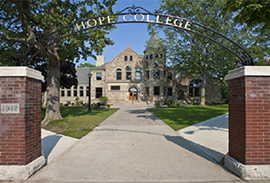1. Networking Fundamentals
What is a Network:
A network is a collection of devices (computers, servers, printers, etc.) connected together to share resources like data, files, or internet access. Networks can be classified by their size and scope:
- LAN (Local Area Network): A network that connects devices in a small geographic area, such as an office building or home.
- WAN (Wide Area Network): A network that spans a large geographic area, often consisting of multiple LANs connected by routers.
- MAN (Metropolitan Area Network): A network that covers a larger geographic area than a LAN but smaller than a WAN, typically a city.
- PAN (Personal Area Network): A small network, typically involving Bluetooth or USB, connecting devices such as smartphones and laptops.
Types of Network Topologies:
Physical and logical topologies define how devices are connected and how data flows between them.
| Topology | Description | Example |
| Bus | All devices connected to a single cable. | Legacy Ethernet |
| Star | Devices connected to a central hub or switch. | Most common in modern LANs |
| Ring | Devices connected in a circular configuration. | Token Ring |
| Mesh | Devices interconnected directly with multiple paths. | Internet, WANs |
| Hybrid | Combination of multiple topologies. | Star-bus hybrid |
Network Models:
There are two main models used to describe how networks function:
OSI Model (Open Systems Interconnection):
The OSI model is a conceptual framework used to understand network interactions in seven distinct layers:
| Layer | Layer Number | Function | Example Protocols |
| Physical | 1 | Transmits raw bits over a physical medium (cabling). | Ethernet, USB, IEEE 802.11 (Wi-Fi) |
| Data Link | 2 | Defines how data is formatted and accessed on the media. | Ethernet (MAC), PPP, HDLC |
| Network | 3 | Routes data between different networks (IP addressing). | IPv4, IPv6, ICMP, OSPF, BGP |
| Transport | 4 | Provides reliable delivery of data (error checking, reordering). | TCP, UDP |
| Session | 5 | Establishes, manages, and terminates communication sessions. | NetBIOS, RPC |
| Presentation | 6 | Translates data into a format readable by the application. | SSL, TLS, JPEG, MPEG |
| Application | 7 | Provides network services to end-user applications. | HTTP, FTP, SMTP, DNS, DHCP |
TCP/IP Model:
The TCP/IP model simplifies the OSI model into four layers:
| Layer | Equivalent OSI Layers | Function | Example Protocols |
| Network Interface | 1, 2 | Physical and data link protocols for communication. | Ethernet, Wi-Fi |
| Internet | 3 | Handles addressing and routing of data. | IP, ICMP, ARP, OSPF, BGP |
| Transport | 4 | Ensures reliable data transfer between devices. | TCP, UDP |
| Application | 5, 6, 7 | Provides network services to applications. | HTTP, FTP, SMTP, DNS, DHCP |
2. Network Addressing and IP Fundamentals
IP Addressing:
An IP address is a unique identifier assigned to each device on a network.
IPv4 Addressing:
IPv4 addresses are 32-bit numeric addresses written in decimal format (e.g., 192.168.1.1).
Classes of IP Addresses:
There are different classes of IP addresses based on their intended use.
| Class | Range | Default Subnet Mask | Use |
| A | 1.0.0.0 – 126.255.255.255 | 255.0.0.0 | Large networks (16 million hosts). |
| B | 128.0.0.0 – 191.255.255.255 | 255.255.0.0 | Medium-sized networks (65,534 hosts). |
| C | 192.0.0.0 – 223.255.255.255 | 255.255.255.0 | Small networks (254 hosts). |
| D | 224.0.0.0 – 239.255.255.255 | N/A | Multicast. |
| E | 240.0.0.0 – 255.255.255.255 | N/A | Experimental. |
Subnetting:
Subnetting divides an IP address space into smaller networks, known as subnets.
- Subnet Mask: Used to identify the network and host portions of an IP address. For example, a subnet mask of 255.255.255.0 indicates that the first three octets are the network portion, and the last octet is for hosts.
- CIDR Notation: Classless Inter-Domain Routing (CIDR) is a way of representing an IP address and its subnet mask using a forward slash followed by the number of bits in the network portion (e.g., 192.168.1.0/24).
IPv6 Addressing:
IPv6 uses 128-bit addresses, written as eight groups of four hexadecimal digits (e.g., 2001:0db8:85a3:0000:0000:8a2e:0370:7334).
Types of IPv6 Addresses:
-
- Global Unicast: Globally unique, routable on the internet.
- Link-Local: Unique only within a network segment (fe80::/10).
- Multicast: Delivered to all interfaces identified by the address (ff00::/8).
- Anycast: Delivered to the nearest member of a group of devices.
DHCP (Dynamic Host Configuration Protocol):
DHCP dynamically assigns IP addresses to devices on a network.
DHCP Process (DORA):
-
- Discover: The client broadcasts a DHCP Discover message to find a DHCP server.
- Offer: The server responds with an IP address offer.
- Request: The client requests the offered IP address.
- Acknowledge: The server sends an acknowledgment to finalize the assignment.
DNS (Domain Name System):
DNS resolves domain names (e.g., www.example.com) into IP addresses. It operates on port 53.
DNS Record Types:
-
- A Record: Maps a domain name to an IPv4 address.
- AAAA Record: Maps a domain name to an IPv6 address.
- MX Record: Specifies the mail server for a domain.
- CNAME Record: Alias for a domain name.
- PTR Record: Maps an IP address to a domain name (reverse DNS).
3. Routing and Switching
Routers and Routing Protocols:
A router forwards data packets between different networks, based on IP addresses.
Static vs. Dynamic Routing:
- Static Routing: Routes are manually configured by an administrator.
- Dynamic Routing: Routers automatically learn routes using protocols like RIP, OSPF, or BGP.
Routing Protocols:
| Protocol | Type | Description |
| RIP | Distance Vector | Uses hop count as the metric (max 15 hops). |
| OSPF | Link State | Uses link cost as the metric, scalable. |
| BGP | Path Vector | Used for routing between ISPs on the internet. |
| EIGRP | Hybrid | Combines features of distance vector and link state. |
Switches and VLANs:
A switch operates at Layer 2 (Data Link) of the OSI model, forwarding frames based on MAC addresses.
VLANs (Virtual LANs):
A VLAN is a logical grouping of devices on a network, providing segmentation even if they are physically connected to the same switch.
Trunking:
Carries VLAN traffic across switches using a trunk link, often configured with 802.1Q tagging to identify VLANs.
Address Resolution Protocol (ARP):
ARP resolves IP addresses to MAC addresses on a local network.
ARP Process:
When a device wants to communicate with another device on the same network, it broadcasts an ARP request to learn the target device’s MAC address.
4. Wireless Networking
Wireless Standards (IEEE 802.11):
The 802.11 family of standards defines Wi-Fi wireless communication. Each standard has different speeds, ranges, and frequencies.
| Standard | Frequency | Max Speed | Max Range |
| 802.11a | 5 GHz | 54 Mbps | 120 ft (37 m) |
| 802.11b | 2.4 GHz | 11 Mbps | 140 ft (43 m) |
| 802.11g | 2.4 GHz | 54 Mbps | 140 ft (43 m) |
| 802.11n | 2.4/5 GHz | 600 Mbps (with MIMO) | 230 ft (70 m) |
| 802.11ac | 5 GHz | 1 Gbps (with MU-MIMO) | 115 ft (35 m) |
| 802.11ax (Wi-Fi 6) | 2.4/5 GHz | 9.6 Gbps (with MU-MIMO) | 120 ft (37 m) |
MIMO (Multiple Input, Multiple Output):
Uses multiple antennas to increase data throughput.
MU-MIMO (Multi-User MIMO):
Allows multiple devices to communicate with the access point simultaneously.
Wireless Security:
Wireless networks are vulnerable to unauthorized access and attacks. To secure a wireless network, you should use strong encryption methods.
| Encryption Protocol | Description |
| WEP (Wired Equivalent Privacy) | Weak, easily broken encryption method (deprecated). |
| WPA (Wi-Fi Protected Access) | Improved encryption, uses TKIP. |
| WPA2 | Strong encryption, uses AES. |
| WPA3 | Enhanced security, better protection for open networks. |
SSID (Service Set Identifier):
Name of the wireless network, can be hidden for extra security.
MAC Filtering:
Allows only devices with specific MAC addresses to connect.
5. Network Security
Firewalls:
A firewall controls the flow of traffic between networks, enforcing security policies.
- Packet-Filtering Firewall: Filters traffic based on IP addresses, port numbers, and protocols.
- Stateful Firewall: Monitors the state of active connections and makes decisions based on the state of the connection.
- Next-Generation Firewall (NGFW): Provides advanced features like application inspection and intrusion detection.
Network Address Translation (NAT):
NAT translates private IP addresses within a LAN to a public IP address for communication over the internet.
PAT (Port Address Translation):
A type of NAT that translates multiple private IP addresses to a single public IP address by assigning different ports.
VPN (Virtual Private Network):
A VPN creates a secure, encrypted tunnel between two networks over an insecure network like the internet.
SSL VPN:
Uses SSL/TLS to encrypt traffic, often used for remote access.
IPsec VPN:
Uses the IPsec protocol suite for encrypting IP packets.
IDS/IPS:
- IDS (Intrusion Detection System): Monitors network traffic for suspicious activity and alerts administrators.
- IPS (Intrusion Prevention System): Actively blocks or mitigates detected threats in addition to alerting.
Authentication Protocols:
- RADIUS (Remote Authentication Dial-In User Service): Provides centralized authentication for remote access services.
- TACACS+ (Terminal Access Controller Access-Control System): Cisco-proprietary protocol providing authentication, authorization, and accounting.
- Kerberos: Authentication protocol that uses a trusted third-party (Key Distribution Center) to authenticate users in a secure manner.
6. Network Tools
Common Tools:
| Tool | Description |
| Cable Tester | Verifies connectivity and pinout of network cables. |
| Toner Probe | Helps trace and identify network cables in a bundle. |
| Crimper | Attaches connectors to cables (e.g., RJ-45 for Ethernet). |
| Loopback Adapter | Tests network interfaces by creating a feedback loop. |
| Multimeter | Measures electrical properties such as voltage and current. |
Command Line Tools:
| Command | Function |
| ping | Tests connectivity between devices using ICMP echo requests. |
| tracert/traceroute | Displays the route packets take to reach a destination. |
| ipconfig/ifconfig | Displays IP configuration for network interfaces. |
| nslookup | Queries DNS servers for domain name resolution. |
| netstat | Displays active connections, ports, and routing tables. |
| arp | Displays and modifies the ARP table. |
| route | Displays and modifies the routing table. |
7. Network Troubleshooting
Troubleshooting Methodology:
- Identify the Problem: Gather information through questioning and diagnostic tools.
- Establish a Theory of Probable Cause: Based on the information, hypothesize the cause of the problem.
- Test the Theory: Use tools or configuration changes to test the theory.
- Establish a Plan of Action: Once the problem is identified, plan how to resolve it.
- Implement the Solution: Apply the fix, such as reconfiguring devices, replacing faulty components, or updating firmware.
- Verify Full System Functionality: Ensure that the problem is resolved and that there are no lingering issues.
- Document Findings, Actions, and Outcomes: Record the troubleshooting steps and solution for future reference.
Common Network Issues and Solutions:
| Issue | Symptoms | Possible Cause | Solution |
| No Connectivity | No internet access or network access. | Faulty cable, incorrect IP settings, firewall rules. | Check cables, verify IP configuration, disable firewall temporarily. |
| Slow Network Performance | Slow file transfers, high latency. | Bandwidth congestion, faulty hardware, misconfigured QoS. | Check for bottlenecks, replace faulty hardware, optimize QoS. |
| IP Conflict | Multiple devices with the same IP. | Static IP address conflict. | Assign unique IP addresses, use DHCP. |
| Intermittent Connectivity | Network drops periodically. | Faulty cables, interference (wireless), DHCP lease issues. | Replace cables, relocate wireless devices, check DHCP lease times. |
| DNS Issues | Unable to resolve domain names. | Incorrect DNS server configuration, DNS cache issues. | Verify DNS server settings, clear DNS cache. |
8. Conclusion
It covers essential concepts and tools for the CompTIA Network+ , from basic network topologies to advanced security and troubleshooting techniques. By mastering these topics, you’ll be well-prepared to build, manage, and troubleshoot networks, making you a valuable asset in any IT environment.
Studying these topics, practicing hands-on labs, and applying real-world experience will help you succeed in the CompTIA Network+ career in network administration and engineering.











